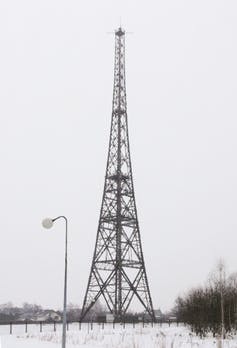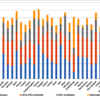In the past few weeks, U.S. officials have warned several times that Russia plans to create the appearance of an attack on its own forces and broadcast those images to the world. Such a “false flag” operation, they alleged, would give Russia the pretext to invade Ukraine by provoking shock and outrage.
By exposing this plan, the Biden administration sought to undermine its emotional power and stop the Kremlin from manufacturing a casus belli, or justification for war.
But false flag attacks aren’t what they used to be. With satellite photos and live video on the ground shared widely and instantly on the internet – and with journalists and armchair sleuths joining intelligence professionals in analyzing the information – it’s difficult to get away with false flag attacks today. And with the prevalence of disinformation campaigns, manufacturing a justification for war doesn’t require the expense or risk of a false flag – let alone an actual attack.
The long history of false flag attacks
Both false flag attacks and allegations that states engage in them have a long history. The term originated to describe pirates’ wielding of friendly (and false) flags to lure merchant ships close enough to attack. It was later used as a label for any attack – real or simulated – that the instigators inflict against “friendly” forces to incriminate an adversary and create the basis for retaliation.

The Gleiwitz incident involved Nazi operatives staging an attack on a radio station near the Polish border in 1939 and blaming the attack on the Polish government as an excuse to invade Poland.
Grimmi59 rade/Wikimedia Commons, CC BY-SA
In the 20th century, there were several prominent episodes involving false flag operations. In 1939, agents from Nazi Germany broadcast anti-German messages from a German radio station near the Polish border. They also murdered several civilians whom they dressed in Polish military uniforms to create a pretext for Germany’s planned invasion of Poland.
That same year, the Soviet Union detonated shells in Soviet territory near the Finnish border and blamed Finland, which it then proceeded to invade.
The U.S. has also been implicated in similar plots. Operation Northwoods was a proposal to kill Americans and blame the attack on Castro, thereby granting the military the pretext to invade Cuba. The Kennedy administration ultimately rejected the plan.
In addition to these actual plots, there have been numerous alleged false flag attacks involving the U.S. government. The sinking of the USS Maine in 1898 and the Gulf of Tonkin incident in 1964 – each of which was a critical part of a casus belli – have been claimed as possible false flag attacks, though the evidence supporting these allegations is weak.
Global visibility, disinformation and cynicism
More recent and even less fact-based is the “9/11 Truth” movement, which alleged that the Bush…


